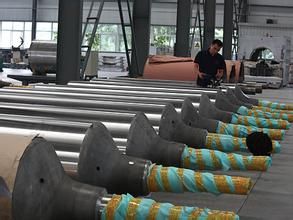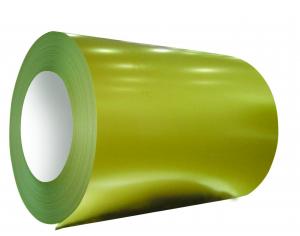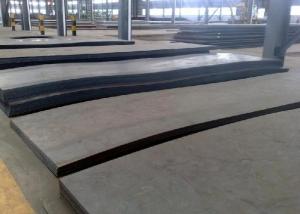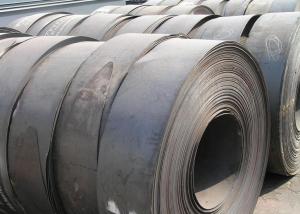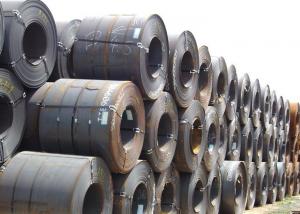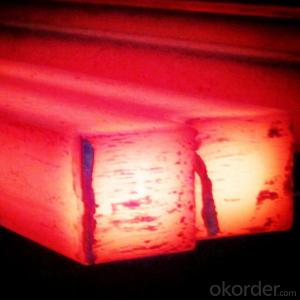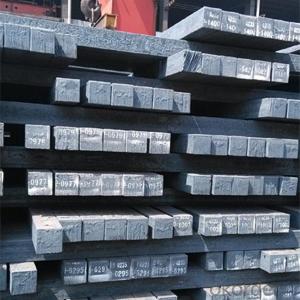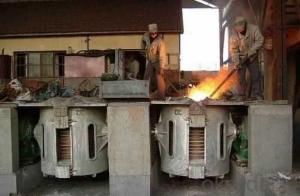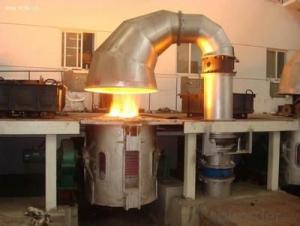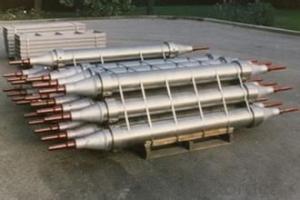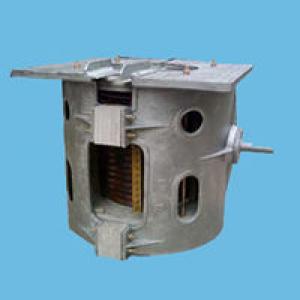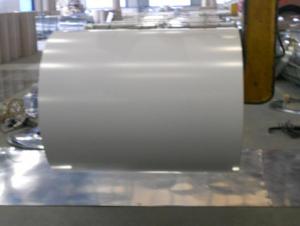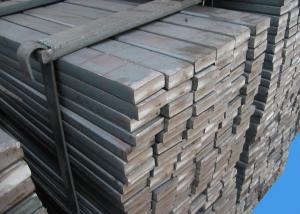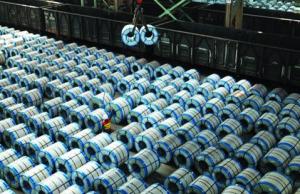Small Foundation Requirement reheat furnace for rolling mill
- Loading Port:
- Tianjin
- Payment Terms:
- TT OR LC
- Min Order Qty:
- 1000 PCS
- Supply Capability:
- 10000 PCS/month
OKorder Service Pledge
Quality Product, Order Online Tracking, Timely Delivery
OKorder Financial Service
Credit Rating, Credit Services, Credit Purchasing
You Might Also Like
Quick Details
| Condition: | New | Type: | Induction Furnace | Usage: | Heat Treatment Furnace |
| Place of Origin: | Brand Name: | Model Number: | KGPS-1000 | ||
| Voltage: | 660V | Power(W): | 1000KW | Dimension(L*W*H): | NOT STANDARD |
| Weight: | 1T | Certification: | GOST,ISO9001,CU,CE | Warranty: | 1 year/3 year |
| After-sales Service Provided: | Engineers available to service machinery overseas | using: | special use in rolling mill | Max input current: | 190A |
| transformer size: | 700x450x350 | Input power: | 1250KVA | Input current: | 1500A |
| Rated power: | 1000KW | oscillation frequency: | 1-2.5KHZ | Work power: | Three phase 380V 50/60HZ |
| Name: | reheat furnace for rolling mill |
Packaging & Delivery
| Packaging Detail: | reheat furnace for rolling mill package: standard wooden cases Send by air/cargo/train/courier/car |
| Delivery Detail: | 25 working days |
Specifications
reheat furnace for rolling mill
1.save energy/electric
2.small foundation requirement
3.Easy operation
4.heating fast
- Q: How do steel products contribute to the healthcare and medical industry?
- Steel products contribute to the healthcare and medical industry in various ways. Firstly, stainless steel is widely used in the production of medical equipment and surgical instruments due to its durability, corrosion resistance, and ease of sterilization. From scalpels and forceps to prosthetics and implants, steel ensures the reliability and hygiene of these critical tools. Additionally, steel is used in the construction of healthcare facilities, providing strength, stability, and fire resistance. Furthermore, steel is also used in medical storage systems such as cabinets and shelves, ensuring efficient organization and safety of medical supplies. Overall, steel products play a vital role in maintaining the quality, safety, and functionality of healthcare and medical services.
- Q: How are steel forgings different from castings?
- Steel forgings and castings are two different manufacturing processes used to produce metal components. The main difference lies in the way each process shapes and forms the metal. Forgings involve the application of pressure or force to shape heated metal, resulting in a stronger and more durable product. On the other hand, castings involve pouring molten metal into a mold and allowing it to solidify, resulting in a less dense and more porous product. In summary, forgings offer superior strength and structural integrity, while castings provide more intricate and complex shapes.
- Q: How do steel products contribute to the construction of zoos and wildlife sanctuaries?
- Steel products play a vital role in the construction of zoos and wildlife sanctuaries by providing structural support and durability to various facilities and enclosures. Steel is used to construct enclosures, fences, gates, and animal habitats, ensuring the safety and security of the animals and visitors. Additionally, steel is used in the construction of walkways, viewing platforms, and bridges, allowing visitors to have a closer and safer interaction with the animals. Its strength and versatility make steel an essential material in creating a sustainable and long-lasting environment for the animals, while also enhancing the overall aesthetics of these facilities.
- Q: What are the different types of steel valves and their applications?
- There are several types of steel valves commonly used in various industries. These include gate valves, globe valves, ball valves, butterfly valves, and check valves. Gate valves are primarily used for on/off applications and provide a tight seal when closed. They are commonly used in water treatment plants, oil and gas pipelines, and power generation systems. Globe valves have a spherical body and are suitable for regulating flow. They are frequently used in industries such as HVAC, steam systems, and chemical processing. Ball valves consist of a rotating ball with a hole that controls flow. They are versatile and widely used in applications where tight shut-off is required, such as oil and gas pipelines, chemical plants, and water treatment systems. Butterfly valves have a disc-shaped closure element that rotates to control flow. They are lightweight, cost-effective, and commonly used in applications involving large flow rates, such as HVAC systems, water supply networks, and wastewater treatment plants. Check valves, also known as non-return valves, allow flow in one direction only and prevent backflow. They are used in various applications, including pumps, compressors, and power plants. Each type of steel valve serves specific purposes based on their design and functionality. The choice of valve depends on factors such as the nature of the fluid, pressure and temperature requirements, and the specific application in industries ranging from oil and gas to water treatment and beyond.
- Q: What are the safety precautions to be followed when handling steel products?
- When handling steel products, there are several safety precautions that should be followed. Firstly, it is important to wear appropriate personal protective equipment (PPE) such as gloves, safety glasses, and steel-toed boots to protect against cuts, abrasions, and impact injuries. Additionally, workers should be trained on proper lifting techniques to prevent strains and back injuries when handling heavy steel objects. It is crucial to maintain a clean and organized work area to prevent tripping hazards and to properly store steel products to prevent them from falling or causing injuries. Finally, regular inspections and maintenance of equipment and tools should be conducted to ensure they are in proper working condition, reducing the risk of accidents.
- Q: How does steel pipe coating for oil pipelines work?
- Steel pipe coating for oil pipelines works by applying a protective layer on the exterior surface of the steel pipe to prevent corrosion and damage. The coating, typically made of epoxy, polyethylene, or polyurethane, creates a barrier between the pipe and the surrounding environment, preventing contact with moisture, chemicals, and other corrosive agents. This coating process involves surface preparation, which includes cleaning, blasting, and priming the pipe, followed by the application of the coating material through various methods like spraying or wrapping. The coating not only enhances the durability and lifespan of the pipeline but also ensures the safe transportation of oil by minimizing the risk of leaks and structural failures.
- Q: How is steel profiled and cut?
- Steel can be profiled and cut using various methods such as plasma cutting, laser cutting, waterjet cutting, and shearing. These methods involve the use of specialized machinery and tools to accurately shape and trim steel profiles according to specific dimensions and designs.
- Q: What are the different types of steel wire mesh products?
- There are several types of steel wire mesh products, including welded wire mesh, woven wire mesh, expanded metal mesh, and perforated metal mesh. Each type has its own unique characteristics and is used for various applications such as fencing, construction, filtration, and reinforcement.
- Q: What are the advantages of using steel bars in construction?
- There are several advantages of using steel bars in construction. Firstly, steel bars are incredibly strong and have a high tensile strength, making them ideal for reinforcing concrete structures and providing stability. Secondly, steel bars are resistant to corrosion, which ensures the longevity and durability of the construction. Additionally, steel bars are versatile and can be easily shaped and molded according to the needs of the project. Moreover, steel bars are readily available in the market and have consistent quality standards, ensuring reliability in construction. Lastly, using steel bars in construction allows for faster construction timelines as they can be prefabricated off-site and easily transported to the construction site. Overall, the use of steel bars in construction offers strength, durability, versatility, and efficiency.
- Q: What are the different types of steel products used in the manufacturing of packaging materials?
- There are several types of steel products used in the manufacturing of packaging materials, including tinplate, tin-free steel, and stainless steel. Tinplate, made by coating thin steel sheets with a layer of tin, is commonly used for food and beverage cans. Tin-free steel, on the other hand, is similar to tinplate but lacks the tin coating, making it suitable for non-food packaging applications. Lastly, stainless steel, known for its corrosion resistance and durability, is often used for packaging materials that require high strength and hygiene standards, such as medical supplies or industrial products.
Send your message to us
Small Foundation Requirement reheat furnace for rolling mill
- Loading Port:
- Tianjin
- Payment Terms:
- TT OR LC
- Min Order Qty:
- 1000 PCS
- Supply Capability:
- 10000 PCS/month
OKorder Service Pledge
Quality Product, Order Online Tracking, Timely Delivery
OKorder Financial Service
Credit Rating, Credit Services, Credit Purchasing
Similar products
Hot products
Hot Searches
Related keywords

